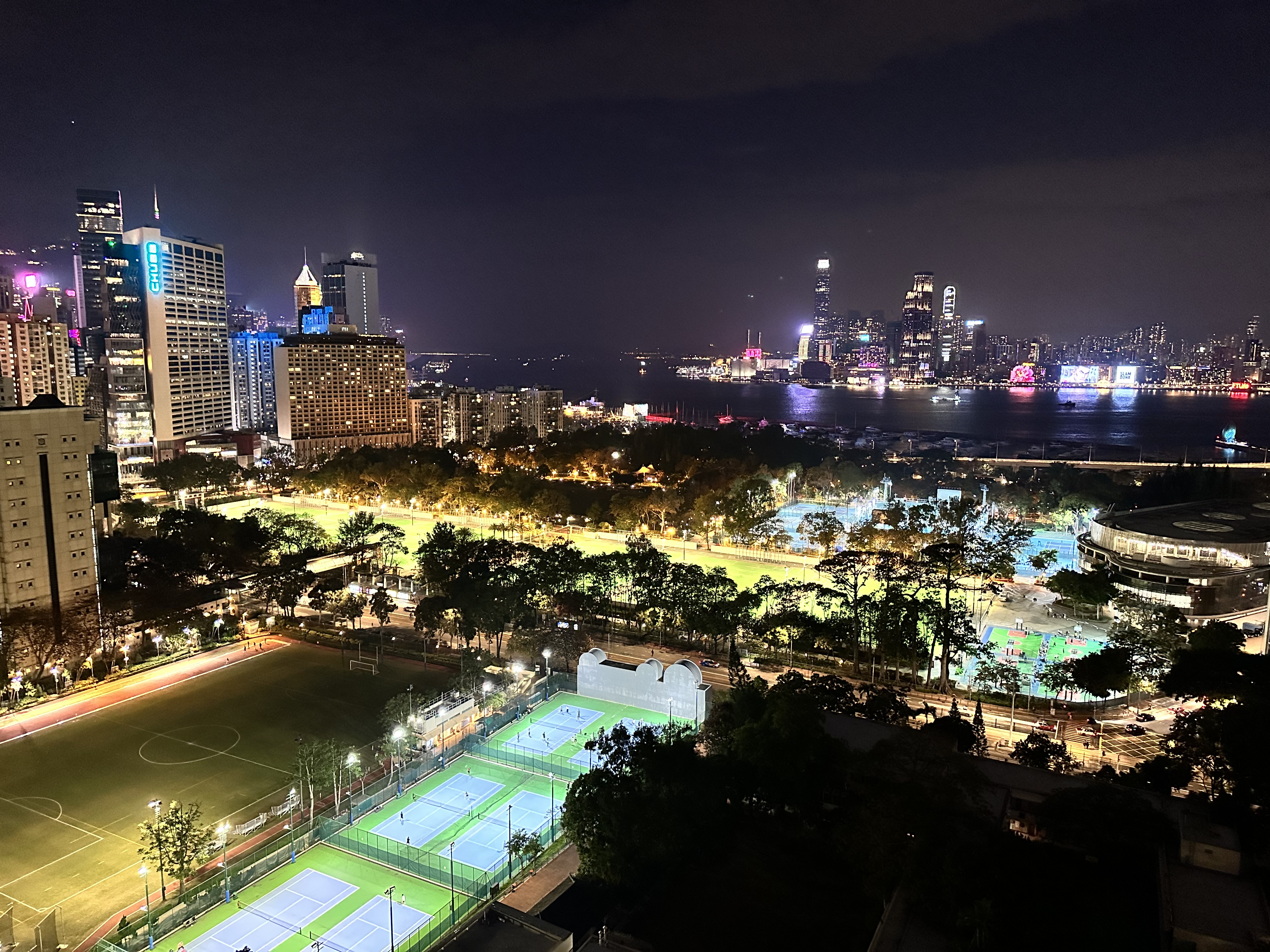Standing on the balcony I can see so many of us. Two teams play rugby on the pitch near the library. Next to the field a group does sprints on the 100 meter track. Around them dozens of joggers do slow loops. Across a wall and worlds away six tennis courts are filled with lessons. Behind those another ten are busy with private matches at their club. Behind those in the dark two boys play basketball in the schoolyard.
Across the street the park glistens, soccer courts and basketball courts and walking paths busy. Beyond that the harbor is full of motion. The pilot boats head in and out to cargo ships on the horizon. The ferries troll back and forth. In between the elevated highway carries busses, taxis and cars, the former two outnumbering the latter. On King’s Road, closer in, the tram trundles in their midst. All these forms of transportation and the occasional airplane overhead.
As the evening settles on the harbor the neon comes on. I think of how many words like that are no longer accurate. Filming. Neon. An album as a disc. Ideas created by technologies that have been themselves turned over. In Hong Kong, where individual bulbs blink, creating the image of rain trickling down the ICC, so many of us live in the intersection of technology and reality. The tram’s rough hum, a sound immediately discernible amid the combustion engines and sports sounds, is of another era. The lit scoreboard in Victoria Park’s central court for a tennis game likewise, not of a different era but of a unique priority compared to the dozens of public courts visible around it, the concrete soccer fields, the basketball courts packed with recreational players. Likewise the Chinese Recreation Club’s fancy pools speak to a priority of wealth, when across the street a huge public pool occupies a chunk of Victoria Park.
I can see so many of us. The Pullman, in Causeway Bay along the park, is almost full. On Saturday I think it was, or close. A shock to see so many of the rectangles lit after years of the pandemic when the building was mostly dark. A shock to realize in that earlier surprise how comfortable I’d become with no tourists, without people in hotels, without travel. How awkward, in some way, it feels to have everything busy, to have Mandarin dominate Tai Hang’s coffee shops on the weekends instead of Cantonese or Australian, French or Singapore’s more British English.
I look at the office towers, still mostly lit, and the dozens of apartment buildings, where lights flicker on every minute as someone returns home, and am glad. So many boxes for humans. There’s both no space, and so many options. A paradox of density and the need for more, driven by the kind of services, the kind of life, available when so many of us are in sight.
